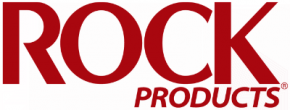As I have loudly predicted for many months now and wrote in this space again last month: There is no recession in the near term, and none in sight. While that is welcome news to all in our industry, whether it be the large multi-nationals with their all-important shareholder interests to consider, or the privately held independent producer who has capital investment to ponder, the fact is the current interest rate environment has jacked up the cost of borrowing money for equipment or other investment needs in our enterprises to levels we haven’t seen in 22 years.
So what does the future of borrowing costs look like?
The popular business press has widely reported on the interest rate environment, and as we know, it has very quickly become more costly to borrow money. It is expensive to take out a loan to buy a business or a car in 2023, and if you want to buy or refinance a house, mortgage rates are around 7%, up sharply from 2.7% at the end of 2020.
That is the result of the Federal Reserve’s campaign to cool the economy. The central bank has lifted its policy interest rate to a range of 5.25% to 5.5%, the highest in more than two decades, which has trickled down to increased borrowing costs across the economy. The goal is to deter demand and force sellers to stop raising prices so much, slowing inflation.
But nearly a year and a half into the effort, the Fed is at or near the end of its rate increases. Officials have projected just one more in 2023, by a quarter point, and at least one senior official has publicly stated there is no need for more than that. So that implies that we are pretty close to what a peak rate would be, and the question will really be how long will interest rates remain at these levels?
Pivot point. The economy is approaching a pivot point, one that has many borrowers wondering when rates will come back down, how quickly and how much. Fed officials expect to cut interest rates next year, but only slightly, and they have publicly stated it could be several years before rates return to a level between 2% and 3% like their peak in the years before the pandemic. Officials do not forecast a return to near zero, like the setting that allowed mortgage rates to sink so low in 2020.
That’s a sign of optimism: Rock-bottom rates are seen as necessary only when the economy is in bad shape and needs to be resuscitated. In fact, some economists think that borrowing costs might remain higher than they were in the 2010s. The reason is that what has long been known as the “neutral rate,” the point at which the economy is not being stimulated or depressed, may have risen. That means today’s economy may be capable of chugging along with a higher interest rate than it could previously handle.
Big Changes. A few big changes could have caused such a shift by increasing the demand for borrowed money, which props up borrowing costs. Among them, the government has piled on more debt in recent years, businesses are shifting toward more domestic manufacturing, potentially increasing demand for factories and other infrastructure, and climate change is spurring a need for green investments.
But guessing the neutral rate is hard to predict, and it moves around and is hard to recognize in real time. Many economists think it might be higher than it was in the 2010s; remember, the economy back then had gone through a very weak economic recovery from the Great Recession and struggled to regain its vigor.
And further, many economists think slightly higher rates would be a good thing. Before the pandemic, years of steadily declining demand for borrowed money depressed rates, so the Fed had to cut them to rock bottom every time there was an economic crisis to try to encourage people to spend more.
So when do rates come down? The single driver will be what happens with inflation. If it continues to come down, I predict the Fed will slowly start to lower interest rates in the first half of 2024.
AVP Pulse Index. The AVP Pulse Index essentially remained steady at a high level this month, backing down ever-so-slightly by 0.1%, but up 6.3% year-over-year. This trend continues to support my thesis that construction will stay steady over the next few quarters as the flow of IIJA funds pushes through the construction economy, coupled with areas such as housing which continue to contribute to overall construction activity. A key driver this month was the Construction Backlog, which is one of the inputs that is calculated in the Pulse Index, as it rose to 9.3 months to the highest since April 2019. As I have stated previously, the very efficient stock markets reflect this positive outlook, as we watch the rise of industry stocks to new 52-week highs each month.

Pierre G. Villere serves as president and senior managing partner of Allen-Villere Partners, an investment banking firm with a national practice in the construction materials industry that specializes in mergers and acquisitions. He has a career spanning almost five decades, and volunteers his time to educate the industry as a regular columnist in publications and through presentations at numerous industry events. Contact Pierre via email at [email protected]. Follow him on Twitter @allenvillere.
